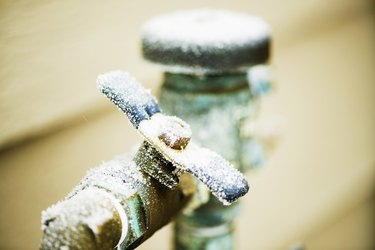Protecting Your Pipes from Freezing: Best Methods
Protecting Your Pipes from Freezing: Best Methods
Blog Article
What're your concepts about Helpful Tips to Prevent Frozen Pipes this Winter?

Cold weather can ruin your pipes, especially by freezing pipelines. Right here's just how to stop it from taking place and what to do if it does.
Introduction
As temperatures drop, the risk of icy pipelines boosts, possibly causing pricey repairs and water damages. Understanding just how to stop frozen pipelines is crucial for property owners in cold climates.
Recognizing Icy Pipes
What causes pipelines to ice up?
Pipes freeze when exposed to temperature levels below 32 ° F (0 ° C) for expanded durations. As water inside the pipelines freezes, it increases, putting pressure on the pipe wall surfaces and potentially creating them to break.
Dangers and damages
Icy pipelines can lead to water disturbances, residential property damage, and pricey repair work. Ruptured pipes can flooding homes and cause substantial structural damage.
Indicators of Frozen Pipes
Determining icy pipelines early can prevent them from rupturing.
Just how to recognize frozen pipelines
Seek lowered water flow from taps, uncommon odors or noises from pipes, and noticeable frost on revealed pipes.
Prevention Tips
Protecting prone pipelines
Cover pipes in insulation sleeves or use heat tape to protect them from freezing temperature levels. Concentrate on pipelines in unheated or outside areas of the home.
Home heating strategies
Maintain indoor spaces properly heated, especially areas with plumbing. Open cabinet doors to allow cozy air to flow around pipes under sinks.
Shielding Exterior Plumbing
Garden pipes and outdoor faucets
Detach and drain yard pipes before winter season. Install frost-proof faucets or cover outside faucets with shielded caps.
What to Do If Your Pipelines Freeze
Immediate activities to take
If you presume frozen pipes, keep taps open up to soothe pressure as the ice thaws. Make use of a hairdryer or towels taken in hot water to thaw pipes gradually.
Long-Term Solutions
Architectural adjustments
Think about rerouting pipelines away from exterior wall surfaces or unheated areas. Include added insulation to attics, cellars, and crawl spaces.
Updating insulation
Purchase high-grade insulation for pipelines, attics, and wall surfaces. Correct insulation aids keep constant temperatures and minimizes the risk of icy pipelines.
Conclusion
Protecting against frozen pipelines requires proactive procedures and fast responses. By recognizing the reasons, indicators, and preventive measures, home owners can secure their plumbing throughout cold weather.
6 Proven Ways to Prevent Frozen Pipes and Protect Your Home
Disconnect and Drain Garden Hoses
Before winter arrives, start by disconnecting your garden hoses and draining any remaining water. Close the shut-off valves that supply outdoor hose bibs and leave the outdoor faucet open to allow any residual water to drain. For extra protection, consider using faucet covers throughout the colder months. It’s also important to drain water from any sprinkler supply lines following the manufacturer’s directions.
Insulate Exposed Pipes
Insulating your pipes is an effective way to prevent freezing. Pipe insulation is readily available at home improvement stores and is relatively inexpensive. Pay close attention to pipes in unheated areas such as the attic, basement, crawl spaces, or garage. Apply foam insulation generously to create a buffer against the cold. You can also wrap your pipes in heat tape or thermostat-controlled heat cables for added warmth.
Seal Air Leaks
Inspect your home for any cracks or openings that could let in cold air. Seal any holes around the piping in interior or exterior walls, as well as the sill plates where your home rests on its foundation. Additionally, make sure to keep your garage door closed unless you’re entering or exiting. Leaving it open creates a significant air leak that can lead to frozen pipes.
Allow Warm Air Circulation
During cold snaps, it’s essential to allow warm air to circulate evenly throughout your home. Leave interior doors ajar to promote better airflow. Open kitchen and bathroom cabinets to help distribute heat consistently around the rooms. If you have small children or pets, be sure to remove any household chemicals or potentially harmful cleaners from open cabinets for safety.
Let Faucets Drip
A small trickle of water can make a big difference in preventing ice formation inside your pipes. When temperatures drop significantly, start a drip of water from all faucets served by exposed pipes. This continuous flow helps prevent the water from freezing. Additionally, running a few faucets slightly can relieve pressure inside the pipes, reducing the chances of a rupture if the water inside does freeze.
https://choateshvac.com/6-proven-ways-to-prevent-frozen-pipes-and-protect-your-home/
:strip_icc()/snow-outdoor-faucet-pipes-4af65d1e5e904fb1aa7bf74071fe5d89.jpg)
We were made aware of that write-up about How to prepare your home plumbing for winter weather from an associate on a different site. Please take a moment to distribute this post if you enjoyed reading it. I am grateful for your time. Please visit our blog back soon.
Book Report this page